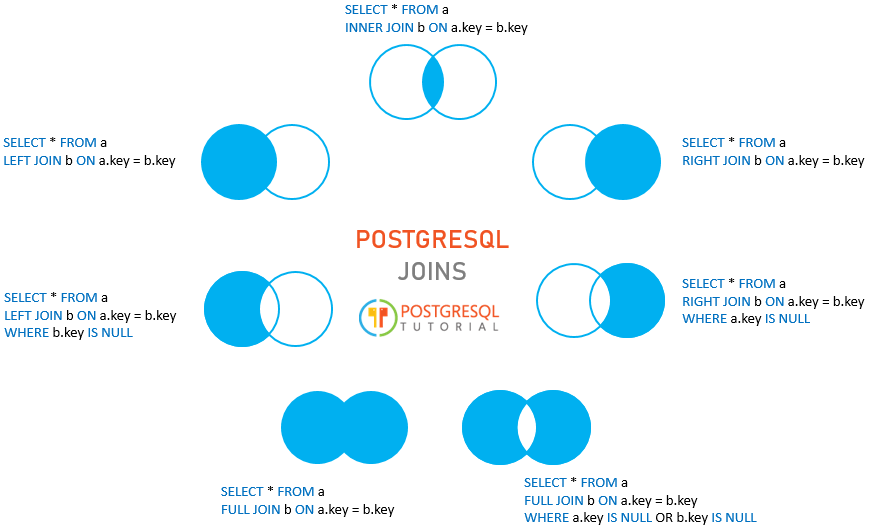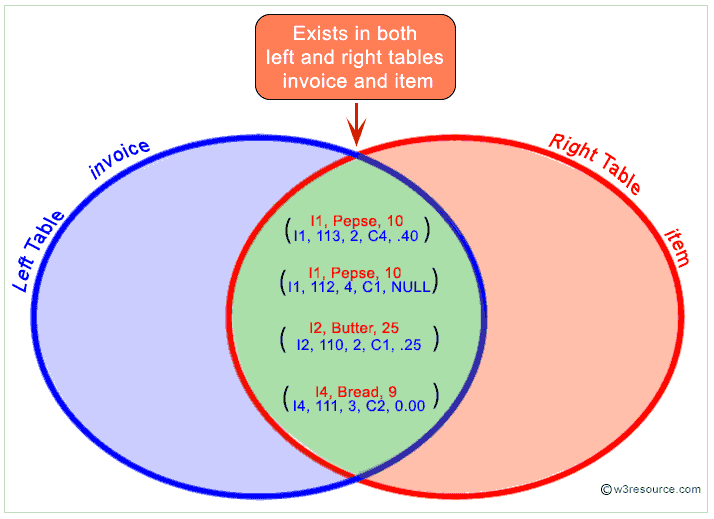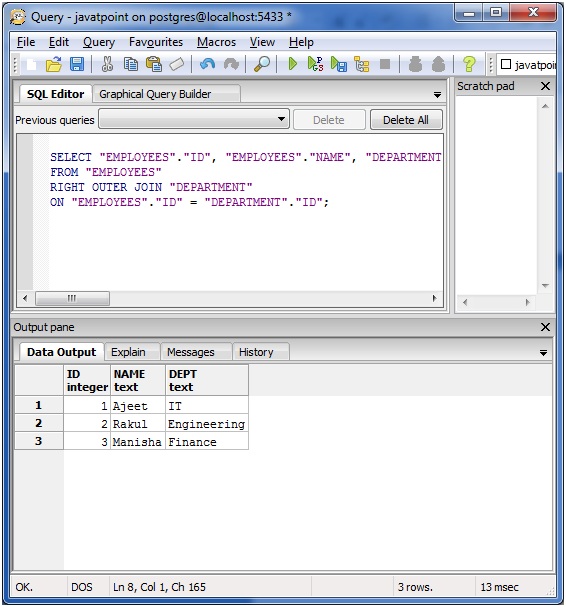
So far, you have learned how to select data from a table, choosing which columns and rows you want, and how to sort the result set in a particular order. A JOIN is a means for combining fields from two. Note: The INNER JOIN keyword selects all rows from both tables as long as there is a match between the columns. If there are records in the Orders table that do not have matches in Customers, these orders will not be shown! Now we will figure out how we can get the Hayward records back in.
INNER JOIN mehrerer Tabellen Dazu nehmen wir wiederum das komplexe Beispiel aus dem vorigen Kapitel, das bei den Gruppierungen genauer besprochen wird. In diesem Fall spielt die Reihenfolge der JOIN-Klauseln eher keine Rolle, weil es sich sowieso um direkte Übereinstimmungen handelt und nur solche Datensätze benutzt werden, die es zu den betreffenden Werten tatsächlich gibt. Ein SQL-Join (deutsch: Verbund) bildet aus den Datensätzen zweier Tabellen einer relationalen Datenbank eine Ergebnistabelle, deren Datensätze Attribute beider.
SQL - INNER JOINS - The most important and frequently used of the joins is the INNER JOIN. Ask Question Asked years, months ago. Viewed 208k times 70. I am trying to write the following query on postgresql: select name, author.
SQL HOME SQL Intro SQL Syntax SQL Select SQL Select Distinct SQL Where SQL An Or, Not SQL Order By SQL Insert Into SQL Null Values SQL Update SQL Delete SQL Select Top SQL Min and Max SQL Count, Avg, Sum SQL Like SQL Wildcards SQL In SQL Between SQL Aliases SQL Joins SQL Inner Join SQL Left Join SQL Right Join SQL Full Join SQL Self Join SQL. SQL JOINS – Grundlagen eines SQL JOINS In relationalen Datenbanksystemen werden Informationen aus einem oder mehreren Anwendungssystem(en) systematisch gespeichert. You can also use LEFT OUTER JOIN or RIGHT OUTER JOIN, in which case the word OUTER is optional, or you can specify CROSS JOIN. For an inner join , the syntax is: SELECT. PostgreSQL 編- 表結合(join)、単純結合、等価結合、外部結合、再帰結合.
Bei diesem join werden alle Zeilen aus der Tabelle A mit der Tabelle B zusammengeführt, wo es keine gleichen Elemente gibt. Es entspricht also auch dem left outer join wo der inner join entfernt wurde. Dans le langage SQL la commande INNER JOIN , aussi appelée EQUIJOIN, est un type de jointures très communes pour lier plusieurs tables entre-elles.
SQL INNER JOIN examples SQL INNER JOIN tables example. We will use the employees and departments table to demonstrates how the INNER JOIN clause works. Each employee belongs to one and only one department while each department can have more than one employee. The relationship between the employees and departments table is one-to-many.
The INNER JOIN matches each row in one table with every row in other tables and allows you to query rows that contain columns from both tables. INNER JOIN 关键字返回行。 INNER JOIN 关键字语法 SELECT column_name(s) FROM table_nameINNER JOIN table_nameON table_name1. Der INNER JOIN führt Datensätze aus der linken und rechten Tabelle genau dann zusammen, wenn die angegebenen Kriterien alle erfüllt sind.

Ist eines oder mehrere der Kriterien nicht erfüllt, so entsteht kein Datensatz in der Ergebnismenge. For each row Rof T the joined table has a row for each row in Tthat satisfies the join condition with R1. First, an inner join is performed. Then, for each row in Tthat does not satisfy the join condition with any row in T a joined row is added with null values in columns of T2. Thus, the joined table.
SQL provides several types of joins such as inner join , outer joins ( left outer join or left join, right outer join or right join, and full outer join) and self join. In this tutorial, we will show you how to use the INNER JOIN clause. SQL Joins with On or Using I recently wrote a post about inner and outer joins , and a couple of people asked what the difference is between USING and ON.
In a nutshell, you use ON for most things, but USING is a handy shorthand for the situation where the column names are the same. It is the most common type of join. Anhand von Code-Beispielen, ohne viel Erklärung, soll hier kurz der Unterschied der JOINs unter Access aufgezeigt werden.
Die Ausgangstabellen: Categories ID. Oracle INNER JOINS return all rows from multiple tables where the join condition is met. Das obige JOIN-Beispiel wird eigentlich als INNER JOIN bezeichnet.

Ob man nun im SQL-Query JOIN oder INNER JOIN schreibt, macht für das Ergebnis aber keinen Unterschied.
Keine Kommentare:
Kommentar veröffentlichen
Hinweis: Nur ein Mitglied dieses Blogs kann Kommentare posten.